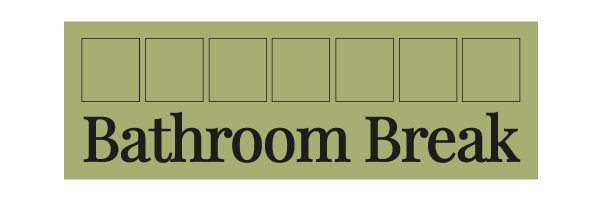Fibre Is The Sexy Wellness Trend You Can’t Afford To Ignore
Photo Courtesy Of TIFF Originals Via Youtube
We don't talk about fibre enough. Which is probably because we instinctively associate it with brown cereals that turn to mush or prune juice favoured by OAPs. It's the stuff parents pushed on you and grandparents eat by choice. Unlike bragging about your protein intake (for #gains) or cutting carbs (for Marbs or something equally self-flagellating), boasting about your fibre intake is basically introducing your bowels to the table. Which, perhaps understandably, people are reluctant to do.
Whether we like it or not, we need fibre (it’s vital for what the British Dietetic Association calls "the normal functioning of the gut") and we need to talk about it, as it's seriously lacking in most of our lives.
AdvertisementADVERTISEMENT
First off, it's worth establishing what fibre is. "Fibre is the part of carbohydrates that's not digested in the same way as starch or sugar," says dietitian and media nutritionist, Azmina Govindji. Examples of fibre are the skin on vegetables like sweetcorn, peas and potatoes, the pectin in fruits and the fibrous part of whole grains such as oats and brown rice.
Different types benefit us in different ways, Azmina tells Refinery29. "Some types of fibre, such as that found in wholemeal bread and bran-based cereals, can act as a sponge and absorb water." This, she explains, adds bulk to stools and can reduce constipation. Some other forms, like oats, contain beta-glucans, which have been shown to lower blood cholesterol. Still others, such as wheat bran fibre, help to reduce what’s called 'transit time', which basically means this fibre speeds up the time your food takes to pass through the gut. This means toxins stay in the body for less time. There have been studies which suggest that eating plenty of fibre is associated with a lower risk of heart disease, stroke, type 2 diabetes and bowel cancer.
But despite all of these extremely palatable facts, and the 2015 UK government guidelines recommending that we increase our fibre intake to 30g a day, on average adults are only having around 18g.
Why? A lot of it may come down to confusion. According to a survey by the Institute of Grocery Distribution (IGD), the public has a really low awareness of where you get fibre from, Azmina explains. This is despite 11% of shoppers expressing a keenness to eat more. Processed foods can provide a lot of the nutrition we need (as well as convenience) but they are often lower in fibre. Additionally, if you follow any of the carb-cutting diets (like keto or paleo) you are automatically cutting fibre too, without realising it. Azmina says: "There seems to be a big gap [in knowledge] and I think it's because fibre was never really sexy."
AdvertisementADVERTISEMENT
Obviously things don't have to be 'sexy' to be taken seriously, but the benefits of fibre are linked to bodily functions which we still have a societal reluctance to talk about. Unlike diets or macronutrients that boast benefits around weight, health, fitness, improved skin and so on (i.e. visible and covetable traits), being 'regular' has in the past been a bit too gnarly a topic for aspirational Instagram posts. Essentially, we've been too coy to talk shit. However, the tide seems to be turning.
In 2019, fermented and probiotic foods became the latest in a line of wellness trends. And while the digital space was saturated with unsubstantiated claims about their benefits and ability to cure things like 'leaky gut syndrome', there is a core of truth to it – these foods are good for your gut. This is what brands and Instagrammers alike have jumped on, from Marks & Spencer's 2020 focus on digestive health to the hashtag #guthealth racking up well over two million posts at the time of writing. The healthy snacking industry is even getting in on the action, with brands calling attention to their fibre content as much as protein.
There are some conditions where more fibre isn't necessarily a good thing (such as IBS) but most of us need more, and the market trend for more fibrous foods and gut-focused nutrition is no bad thing in itself. But as with anything that's becoming a 'trend' you should always be cautious of products or misinformation that prioritises being Instagrammable over actual nutritional value.
Which means, if you can, taking things back to basics. Foods high in fibre include beans and pulses, fruit and vegetables (we're looking at you, peaches), whole grains, nuts and seeds, all of which feature highly in vegetarian and vegan diets, and it's always worth prioritising whole foods over supplements or bars with big claims and little backing. That said, there will always be faddy trends that we jump on, whether they're new or simply reintroduced. So who knows, maybe now is the time for Fruit & Fibre to get as popular as kombucha? Stranger things have happened.
AdvertisementADVERTISEMENT







